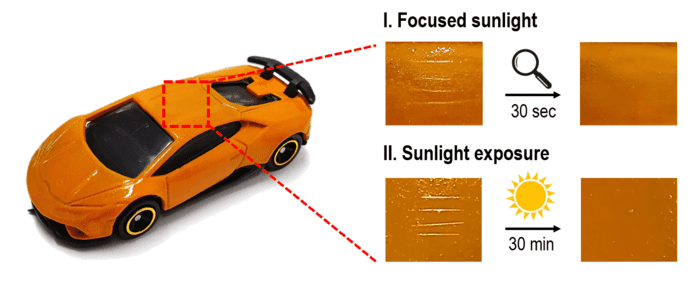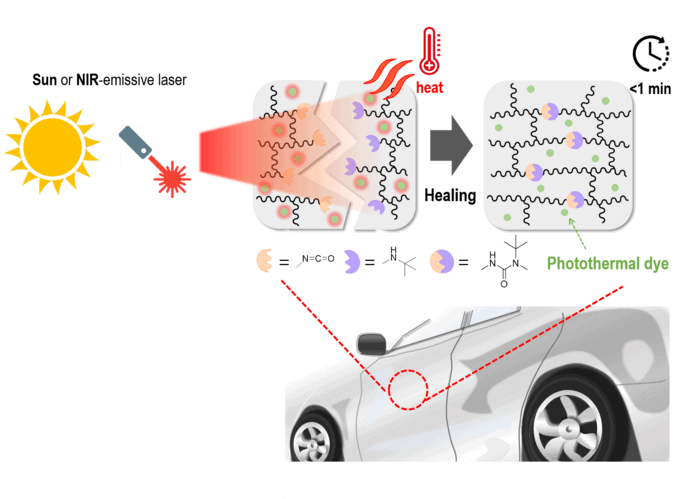
Nothing beats the smell and look of a shiny, brand-new car. But as we all know, this pristine state doesn’t last very long and if Murphy’s Law is any indication, the more you’re excited about your new purchase, the likelier it is you’ll see the first scratches the same day you leave the dealership. It is a simple fact of life. But fret not, because researchers in South Korea have got you covered with a new chemical coating that contains a special dye that absorbs infrared light and triggers a chemical reaction that causes the coating to self-repair. Parking for just 30 minutes in the open sun could be enough to restore the paint job of your car.
Just add light
New cars often come with various paint coatings. Some popular options include nano-ceramic coating, which is supposed to offer protection from weathering and give the paint a wax-like finish, as well as paint protection films that provide a more comprehensive form of protection. But while such coatings offer initial protection against scratches and minor physical impacts, once they actually become scratched, it is very difficult or impossible to repair the damage.
The researchers at the Korea Research Institute of Chemical Technology (KRICT) wanted to develop a new coating that offers both decent protection and self-healing properties when damaged. They started with a protective resin coating, onto which they added a polymer network material based on acryl polyol and a photothermal dye. This last ingredient is the secret sauce that makes this self-healing coating shine.

When the dye absorbs infrared light from the sun, it raises the surface temperature of the entire polymer coating, whose chemical bonds then break and recombine multiple times. This process essentially reorders the damaged polymer structure and restores the paint to its original condition, thereby getting rid of scratches.
To put the coating to the test, the researchers applied the material to a small model car. After intentionally producing some superficial damage to the coating, the researchers then used a magnifying glass to concentrate light onto the damaged area, patching it up in less than 30 seconds. In another test, the scratched model car was left in the sun for 30 minutes at noon, producing the same self-repair effect.
The photothermal dye is transparent, so it does not affect the paint’s actual color. It’s not just for cars either. Boats, planes, and any number of surfaces that require paint maintenance could employ the solar-activated self-repairing coating. This may also include smartphones, though it remains to be tested whether the touchscreen still works properly after applying the coating.
“The developed technology is a platform technology that synthesizes self-healing coating materials using both inexpensive commercial polymer materials and photothermal dyes. It is expected to be widely used not only in automotive clearcoats but also in various applications,” said lead author Dr. Jin Chul Kim from KRICT.
The self-healing coating was described in a new study that appeared in the journal ACS Applied Polymer Materials.






